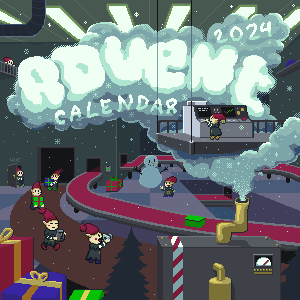You might have heard of the AY 3-8910 chip, AY 3-8912 or maybe of their Yamaha clone l the YM2149, and of that the former practically resides in the NEC PC98's chip, the YM2608 ... Well, bad news - even though you see the name of a respected music tech manufacturer here, you're not gonna use FM synths or anything close to it in this format! D: Just three channels. But you really might make it look like you're using not three, but all six. '[#[Instruments, Tone and Noise] First off, download '[l[http://bulba.untergrund.net/vortex_e.htm[Vortex Tracker II] or, to be more specific, its' enhanced version called '[l[http://https//dl.dropboxusercontent.com/u/95941449/Spek/VT_1.2RCD.rar[Vortex Tracker II Improved] which is gonna make your life easier here just a bit. How? Well, we'll explain that... Later on. ^,^ VTII affords three types of sounds to ya, all of which can be combined with each other: tone, envelope and noise. The former can have different notes on all three channels, but the two latter can't. Now, VTII's interface might be a bit tangled for you, but it might be somewhat cleaner once you squeeze off your first note. You will need to refer to the "Samples" tab in that case - that is instrument editor for you. Change the first instrument from this: '[o]00 [ tne +000_ +00(00)_ 0_'[/o] ...to this: '[o]00 [ Tne +000_ +00(00) F_ ***************'[/o] Don't forget to use spacebar to make the "T" in here capital or vice versa! So we've defined that we're gonna use tone and bring it on maximum volume. As you're done with this, return to the pattern editor, and place try to place a couple or two of notes this way: '[o]00 | C-3 1..F .... 01 | --- .... .... 02 | C#3 1... .... 03 | --- .... .... 04 | D-3 1..D .... 05 | --- .... .... 06 | R-- .... ....'[/o] There you go! The "F" and "D" placed in this pattern will change the channel's volume, while "1" stands for the instrument that will be played on it. "R--" is, obviously enough, the rest note. Now, you've really gotta get back to our instrument editor - just to make a small modification of your new sample. By playing around with Length and Loop values as well as, again, the spacebar, try to make the following instrument: '[o]00 | TNe +000_ +00(00) F_ *************** 01 | TNe +000_ +00(00) E_ ************** 02 [ Tne +000_ +00(00) E- **************'[/o] '[b]< place loop here'[/b] Replay the pattern and see how the sounding has changed! For the curious, we've got a blend of tone and noise in the sample's first two frames - which means they will play simultaneously. In the last frame (the one that loops), the volume will automatically decrease. The opposite of this thing is, obviously, "+". Now, you might wonder what all those zeros in the above example mean. Generally speaking, the first three are for the tone pitch setting (pretty useful for vibrato), the rest are for noise duty. Still didn't get it? We-e-e-ell... Create the instrument number two! '[o]00 [ Tne +002_ +00(00) F_ ***************'[/o] '[b]< place loop here'[/b] '[o]01 [ Tne -002_ +00(00) F_ ************** 02 [ Tne +002_ +00(00) F_ ************** 03 [ Tne -002_ +00(00) F_ **************'[/o] Now that's quite a wavey vibrato you've got there! More coming soon. ._. '[#[Envelopes] The envelopes are basically the equivalent of 2A03's triangle channel - except with the possibility to go for a buzzier sound. More coming soon. ._. '[#[Gettin' Drummy] Coming soon! '[#[See Also] '[l[http://chipmusic.org/forums/topic/27/vortex-tracker-ii/[Vortex Tracker II tutorial] by ant1, which is roughly the same thing, but without download links. '[[Vortex Tracker II] '[[Vortex Tracker II Effects List]


